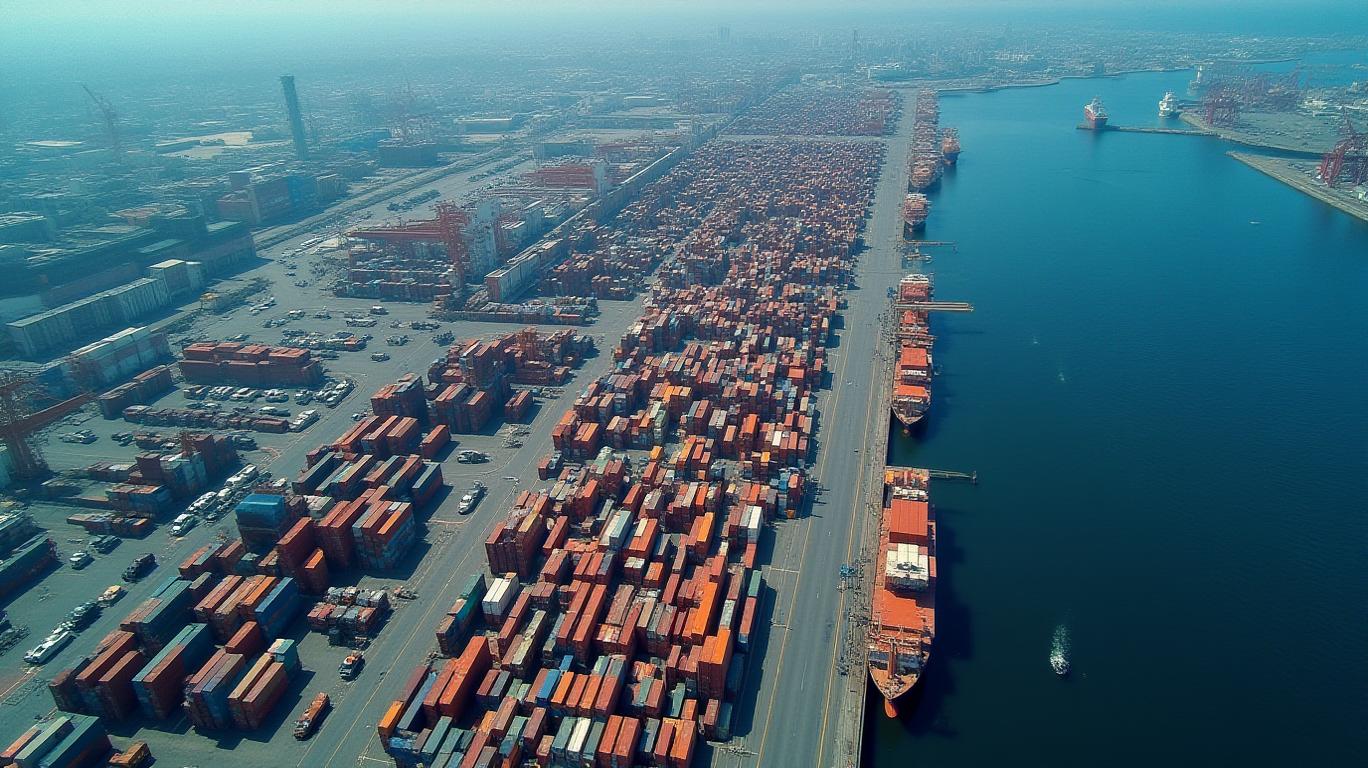Tariff-Driven Turbulence: The U.S. Cargo Import Decline and Its Economic Ripples
The U.S. cargo import landscape is in upheaval. After a record surge in Q1 2025—driven by businesses and consumers stockpiling goods ahead of steep new tariffs—the first quarterly decline in GDP since 2023 has arrived. The data paints a stark picture: cargo imports fell sharply post-April, as tariffs averaging 18.8%—the highest since the Great Depression—squelched demand. The consequences, from clogged supply chains to margin-squeezed businesses, are now rippling across industries.

The Pre-Tariff Rush and Its Aftermath
The Q1 surge was no accident. Companies raced to import goods before tariffs—such as a 54% levy on Chinese imports and 46% on Vietnamese goods—took effect in April. This preemptive buying inflated imports at a 41.3% annual rate, with goods imports spiking 50.9%. Big-ticket items like automobiles, industrial machinery, and consumer electronics were top targets.
But the post-April correction has been brutal. Container imports to the Port of Los Angeles are projected to drop 15-20% year-over-year, while the Port of Savannah saw agricultural exports plummet 13%. . The Freight Payment Index also signals strain: shipments fell 5.8% quarterly, though year-over-year declines are narrowing—a glimmer of stabilization amid chaos.
Sectors in the Crosshairs
The tariff fallout isn’t evenly distributed. Retailers face a perfect storm: lean inventories (now just 1-2 months of sales) and rising input costs. Steel prices, for instance, jumped 12-15% early this year, squeezing manufacturers.
Even logistics is buckling. Class 8 truck orders—critical for freight—dropped to pandemic levels in April, down 52-54% year-over-year.
The Global Supply Chain Shift
Businesses are scrambling to diversify. The “China plus one” strategy is now a necessity, with companies like Matson reporting a 30% year-over-year drop in container volume as orders shift. Ports like Oakland (a key exporter of refrigerated goods) and Long Beach face declining volumes, while geopolitical risks loom large.
Consumers, too, are adapting. Services spending slowed to a 2.4% annual rate, as utility use surged (likely weather-related) and durable goods purchases dropped 3.4%. The message is clear: Americans are holding back on big-ticket items amid inflationary pressures.
The Bottom Line: A Fragile Recovery
The Federal Reserve’s analysis projects tariffs will reduce U.S. GDP by 0.8% by year-end, equivalent to the economic output of 223,000 full-time jobs. While the initial stockpile surge boosted revenue (tariffs generated $209.4 billion in 2025), the long-term costs—margin erosion, supply chain disruptions, and job losses—are mounting.
Investors should brace for volatility. Sectors tied to tariffs—steel, logistics, retail—face headwinds, while companies with diversified supply chains (e.g., Walmart (WMT) with its Vietnam factories) may weather the storm.
The takeaway? Tariffs are a double-edged sword. While they shield domestic industries, the economic drag—from higher consumer costs to faltering GDP—underscores the perils of protectionism. As the data shows, the U.S. economy is now in a precarious balancing act—one misstep could tip it further into decline.
In the end, the cargo import decline isn’t just a statistic—it’s a warning. With global supply chains fractured and businesses reeling, the path to stability will require more than tariffs. It demands a strategy to rebuild competitiveness without stifling growth. The question remains: Will policymakers learn before the next crisis hits?


_cbf77e8c1748017079428.jpeg)





